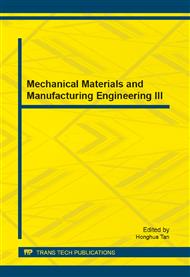p.551
p.557
p.561
p.568
p.574
p.580
p.585
p.593
p.598
Degradation Mode Recognition for Battery of Electric Vehicle Based on ART2 Network
Abstract:
In the process of describing the degradation process of battery of electric vehicle, degradation models under dynamic running conditions need to be analyzed in order to effectively forecast the remaining useful mileage and life of battery. This paper proposed a new method of pattern recognition based on ART2 network to distinguish the degradation mode of the battery of electric vehicle. First, the degradation mechanism is analyzed of the battery to extract the features of degradation process. Then the learning process of ART2 is designed for recognition of the degradation mode. After that, HMM is applied to research the dynamic changes of the degradation mode and predict future degradation mode sequences. Finally, experimental analysis based on batterys charge and discharge data proves the effectiveness of the proposed approach.
Info:
Periodical:
Pages:
574-579
Citation:
Online since:
November 2013
Keywords:
Price:
Сopyright:
© 2014 Trans Tech Publications Ltd. All Rights Reserved
Share:
Citation:


